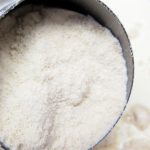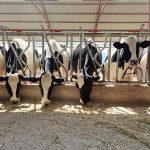
By Cristina Alvarado is NZX data and insights commercial manager
As we progress towards the back end of the dairy season, the global dairy industry continues to go through a complex landscape shaped by numerous factors, from supply disruptions to evolving demand dynamics.
Building upon the trends observed in February, here’s an overview of the current state of the global dairy market and key insights for the month ahead.
Recent GDT events have depicted a mixed performance, characterised by notable fluctuations in dairy commodity prices.
While February witnessed index increases at both events (+4.2% on Feb 6 and +0.5% on February 20), March’s first event on the 5th marked a significant downturn with a -2.3% drop in the GDT price index, the largest slump felt on the platform since August the previous year.
Milk powder prices, in particular, experienced notable declines, reflecting weakened demand in certain contracts, particularly in C2 for both whole milk powder (WMP) and skim milk powder (SMP).
New Zealand saw a slight downturn in January’s milk production, with a 1.2% decrease and a 0.6% dip on a milksolids basis.
Despite this, marginal improvements in season-to-date figures (0.8% increase on a milksolids basis), provide a glimmer of optimism amid ongoing supply challenges.
Globally, milk production trends vary across regions. While Europe witnessed a modest year-on-year (YOY) increase of 0.4% in December, key producing countries such as Germany, France, the Netherlands, the United Kingdom and Ireland reported YOY declines (-0.4%, -0.1%, -2.3% and -0.2% respectively).
In January, Australia reported a notable increase in milk production, up by 4.9% year on year, marking nine consecutive months of year-on-year growth.
The United States, however, experienced a 0.9% decrease in milk production in January, continuing a trend of seven consecutive YOY declines. Argentina faced challenges with a significant 12.6% YOY decrease in January, and Uruguay saw an increase in production, up by 3.2% YOY.
International trade dynamics continue to be influenced by a myriad of factors, including supply disruptions and economic conditions. Despite challenges, New Zealand’s January dairy exports surged in volume by 12.5%, albeit with a decrease in value of 8.8%.
Notably, despite a 10.0% YOY drop in China’s total dairy imports in December, NZ experienced a remarkable 32.4% increase in exports of WMP to China, underscoring the significance of tariff-free trade agreements.
Argentina, Australia, Europe, and the United States are among the other key players navigating fluctuations in export volumes, reflecting broader market uncertainties. Argentina reported a 20.8% YOY increase in December but was down by 14.5 % YTD. Australia reported an increase YOY with 4.8% but a decrease of 11.8% YTD.
Europe saw a decline of 6.5% YOY in December exports but an overall increase of 0.6% YTD. The US had a drop in both YOY and YTD figures for December of 6.6% and 7.4% respectively.
Additionally, China’s overall dairy and particularly WMP imports witnessed a significant drop (-10% and -47% respectively), contributing to the challenges faced by global dairy exporters.
Looking ahead, uncertainties surrounding ongoing supply disruptions and shifting demand dynamics persist, presenting both challenges and opportunities for stakeholders in the dairy industry.
Weather patterns, geopolitical tensions, and economic factors will continue to shape the industry’s trajectory in the months to come.
The resilience demonstrated by New Zealand amidst these challenges underscores its pivotal role in the global dairy market.
Proactive measures, including monitoring market trends, enhancing supply chain resilience, and fostering innovation, will be imperative for sustained growth and resilience in the ever-evolving dairy landscape.
As people and organisations navigate dynamic market conditions, agility, innovation, and strategic collaboration will be key drivers for success.
This article first appeared in our sister publication, Dairy Farmer.
You can now read the most important #news on #eDairyNews #Whatsapp channels!!!
🇺🇸 eDairy News INGLÊS: https://whatsapp.com/channel/0029VaKsjzGDTkJyIN6hcP1K

























